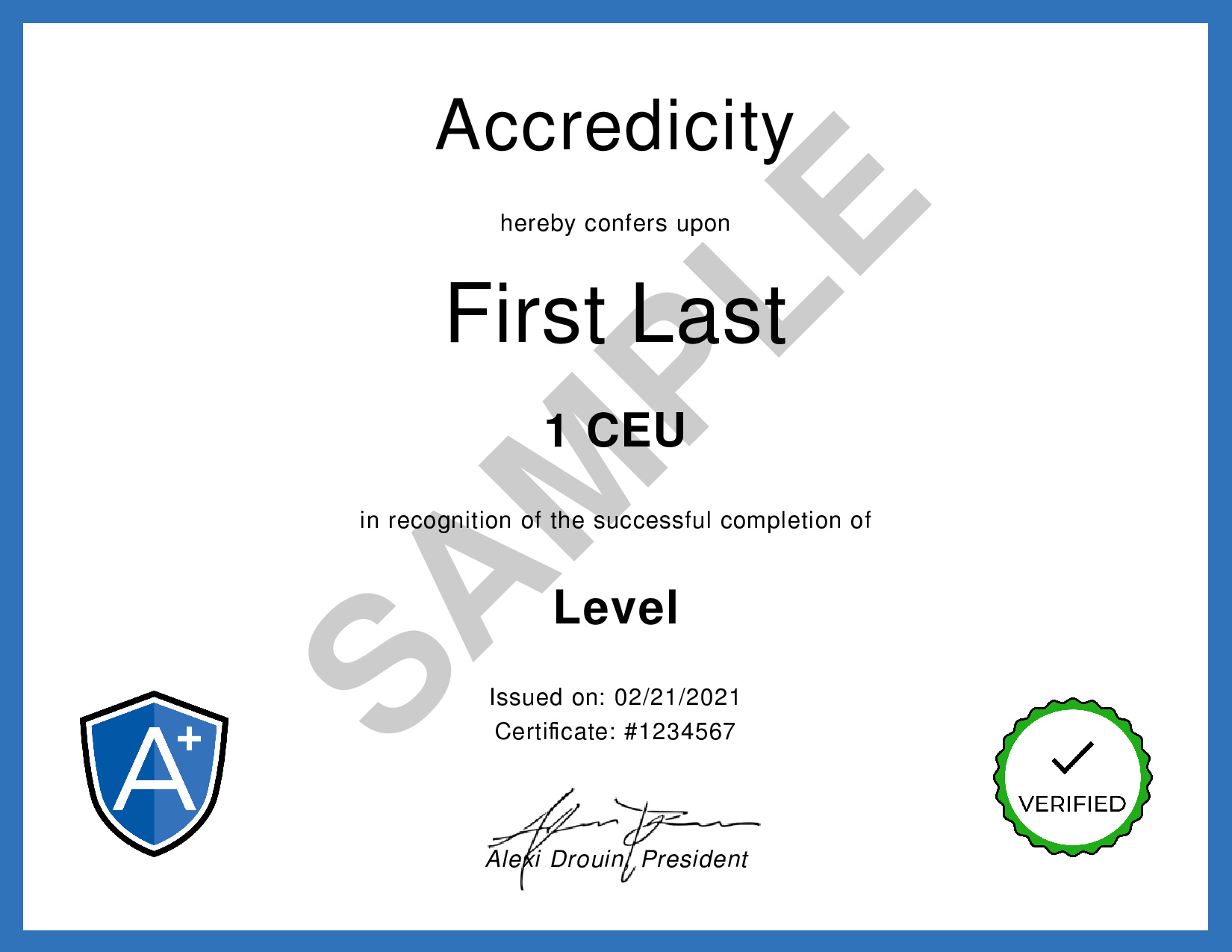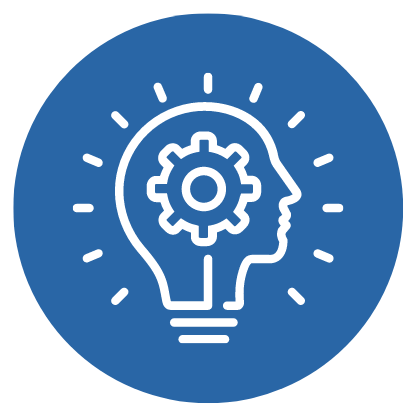OpenAI Plays Hide And Seek… And Breaks The Game! – Two Minute Papers
Reference: Two Minute Papers. (2019, October 22). OpenAI Plays Hide and Seek…and Breaks The Game! 🤖 [Video]. YouTube.
We Make Your Education Count

Get the Credit You Deserve and Become the Most Attractive Job Candidate by Earning and Posting A+ Badges to Your Linkedin Profile.
Sign Up to Get Started at Accredicity
|
Discover incredible emergent behaviors as OpenAI's AI agents play a revolutionary game of Hide and Seek and break the game! OpenAI Plays Hide and Seek, a project created by Károly Zsolnai-Fehér, pits two AI teams against each other in a hide and seek game. The goal of the project is to observe emergent behaviors, and the results are impressive - AI agents learn to collaborate and innovate in order to win the game. From the pandemonium of the first few million rounds to the surprise of box surfing, OpenAI proved its agents are capable of complex strategies that can outsmart humans. In addition, the paper contains comparisons to an earlier work, implementation of circular convolutions, and more. Learning Outline1. OpenAI created a hide and seek game for their AI agents to play. Instructional ContentOpenAI, a leading research organization focused on artificial intelligence, recently released a project that pitted two AI teams against each other in a game of hide and seek. The goal was to see if the AI agents could develop any emergent behaviors, and the results were remarkable. The AI agents quickly adapted to the game and began to cooperate with each other to win the game. The hiders, for example, learned to block the doors with boxes to prevent the seekers from entering, while the seekers learned to use ramps as a means of transportation. The AI agents went even further, learning to box surf and even break the game by exploiting a physics bug. The hiders responded to this by separating the ramps from the boxes, locking down the remaining tools, and building a shelter. The AI agents even showed signs of strategic thinking, such as setting up their shelter right next to the seekers. This project from OpenAI is an incredible example of how AI agents can learn from their environment and develop intelligent strategies. It also shows how AI agents can work together to achieve a common goal. This project is an excellent example of how AI can be used to create dynamic and engaging experiences. OpenAI's project is a testament to the potential of AI and how it can be used for creative purposes. It is an inspiring example of what AI is capable of and shows the potential applications of AI in the future. Productivity
|

OpenAI created a hide and seek game for AI agents to play, and it is so cool! At first, the agents just ran around randomly and the seekers (who were trying to find the hiders) won most of the time. But then the hiders figured out that if they worked together and blocked the entrances, they could start winning. And then the seekers found a secret move called "box surfing" - they used a ramp to get on top of the boxes and stay hidden! The hiders had to get creative and started stealing the ramp away and locking it up so the seekers couldn't use it. This game is so awesome that it feels like the AI agents are alive and competing against each other in an epic battle! Video Quotes1. "These agents learn from previous experiences, and to the surprise of no one, for the first few million rounds, we start out with...pandemonium. Everyone just running around aimlessly." –Károly Zsolnai-Fehér 2. "I think the coolest part about this is that the map was deliberately designed by the OpenAI scientists in a way that the hiders can only succeed through collaboration. They cannot win alone and hence, they are forced to learn to work together. Which they did, quite well." –Károly Zsolnai-Fehér 3. "Man, what a paper. This system can be extended and modded for many other tasks too, so expect to see more of these fun experiments in the future. We get to do this for a living, and we are even being paid for this. I can’t believe it." –Károly Zsolnai-Fehér Related Quotes1. "OpenAI Five is the first AI to beat the world champions at a complex game with hidden information." [Greg Brockman, Co-founder of OpenAI] 2. "We’re really excited to see how OpenAI Five evolves and how it will help us learn more about AI and how it can be used to solve complex tasks." [Greg Brockman, Co-founder of OpenAI] 3. "The AI agents were able to learn the game from scratch using only the raw pixels on the screen, and the game was so hard that even the best humans in the world couldn’t beat them." [Greg Brockman, Co-founder of OpenAI] Competencies1. Digital Literacy Learning Outcomes1. Remember: Identify key characteristics of OpenAI's hide and seek game and explain how it resembles generative adversarial networks. 2. Understand: Describe how the two teams compete against each other and how they must adapt when one team discovers a new strategy. 3. Apply: Demonstrate how the hiders must collaborate to win and how they can take advantage of the limited time when the seekers are frozen. 4. Analyze: Analyze the physics system of the game and explain why certain strategies would and would not work. 5. Evaluate: Evaluate how the OpenAI scientists designed the map to compel the hiders to collaborate. 6. Create: Create a strategy to defend against an AI seeker using box surfing defense. Sample Answers1. I learned that OpenAI created a hide and seek game for their AI agents to play which resulted in some amazing, emergent behaviors. I also learned that these AI agents are able to learn from their experiences, and that the map was designed to require collaboration for the hiders to succeed. 2. I also discovered that the AI agents were able to find unique strategies to win the game, such as using a ramp to climb on top of a box. This was a surprise to the OpenAI scientists and demonstrated the power of AI to find new solutions. 3. Lastly, I learned about the use of intrinsic motivation and circular convolutions for the agents to detect their environment. This provides a way for the AI agents to understand their environment and take appropriate actions to reach their goals. Károly Zsolnai-FehérKároly Zsolnai-Fehér is a Research Scientist and the leader of the OpenAI team in Hungary. He is a well-known expert in the field of Artificial Intelligence (AI) and robotics, having published several papers on AI and robotics, and also having contributed to numerous AI projects and initiatives. He has a PhD in Computer Science from the Budapest University of Technology and Economics and a master's degree in Mathematics from the Central European University. He is also a visiting professor at the University of Debrecen and a researcher at the KTH Royal Institute of Technology in Stockholm. He is an expert on OpenAI Plays Hide and Seek because of his extensive knowledge and experience in the field of AI and robotics. He has been part of the OpenAI team since 2018 and has been actively involved in researching and developing the Hide and Seek AI game. He is associated with the OpenAI organization, which is a non-profit artificial intelligence research company backed by Elon Musk, Peter Thiel, and other high-profile investors. OpenAI AssessmentQ: Which of the following is an example of an emergent behavior in the OpenAI hide and seek game? Answer: B) Agents learning to box surf by exerting force on themselves QuestionsCommon Hypothetical Questions: Real-Life Applications: KeywordsOpenAI Hide and Seek, Intrinsic Motivation, Circular Convolution Facts1. OpenAI created a hide and seek game for two AI teams to compete against each other. Trends1. Develop a game where the AI agents have to find creative and collaborative ways to solve puzzles - this could be based on the hide and seek game developed by OpenAI and the creative strategies employed by the AI agents. 2. Create a series of videos in which AI agents attempt to solve increasingly difficult puzzles, with the viewers having to guess the strategies used by the AI agents. 3. Develop a game where the AI agents have to find creative and collaborative ways to build structures and objects - this could be based on the AI agents’ ability to collaborate and use creative strategies to construct items such as ramps and shelters. SourceThis learning instructional guidance was formulated using the GPT-3 language model created by OpenAI. ShareOpenAI created an AI hide and seek game where two AI teams compete. They developed sophisticated strategies like blocking doors and box surfing! 🤯 Amazing work by OpenAI! #AI #opensource #games #tech #innovation #future @Accredicity |







 38 Creds - Productivity
38 Creds - Productivity



